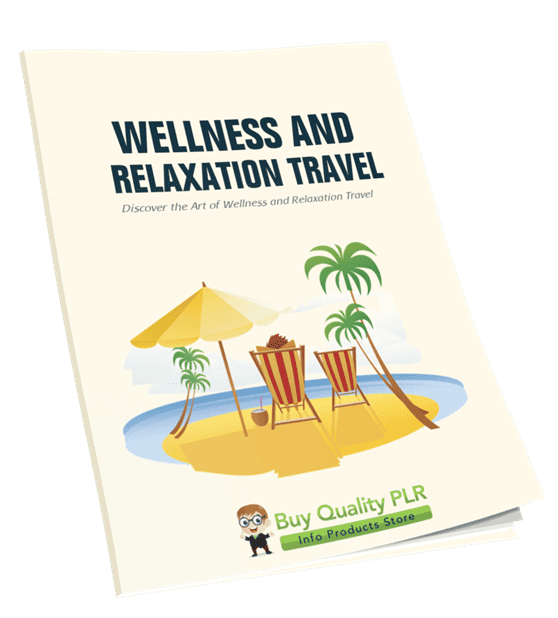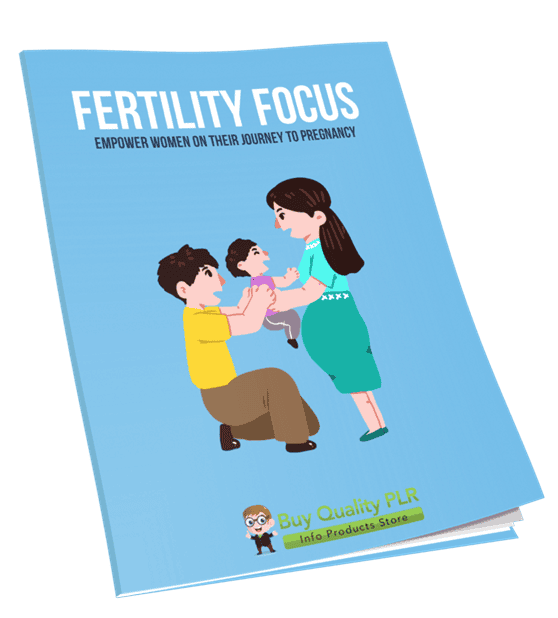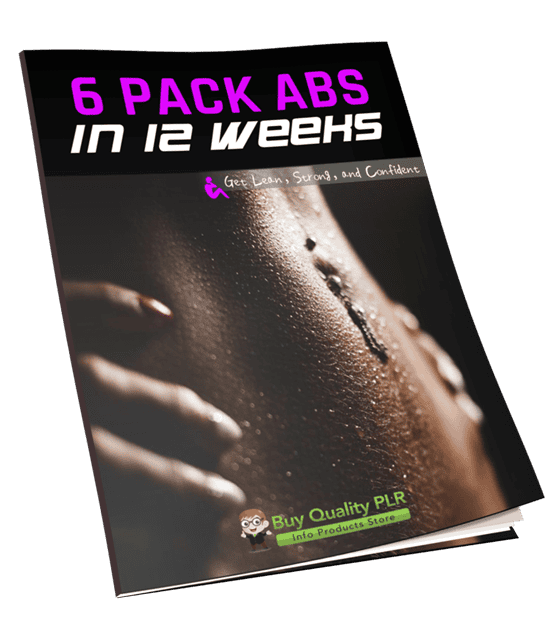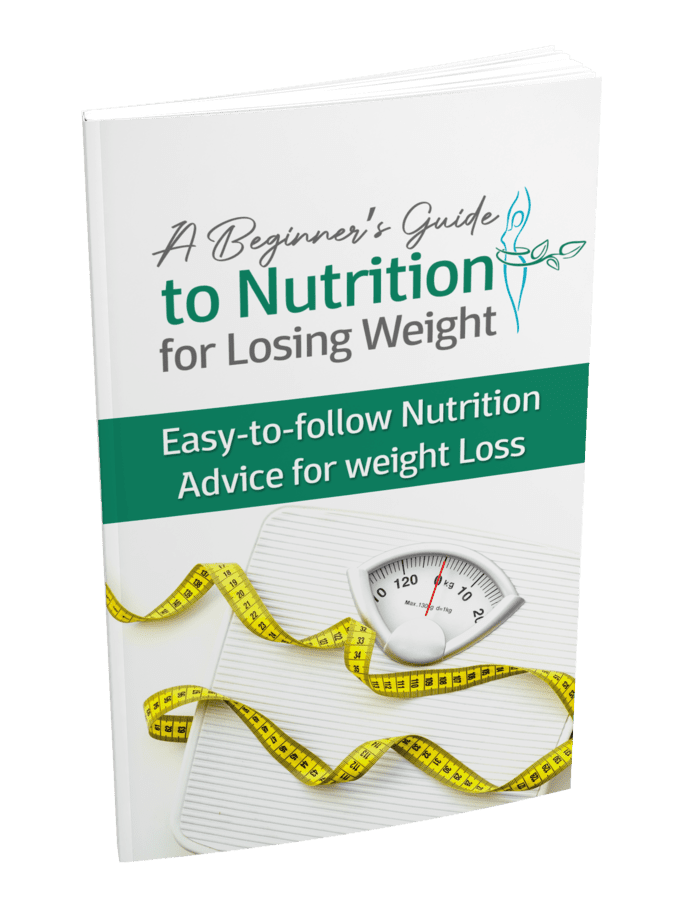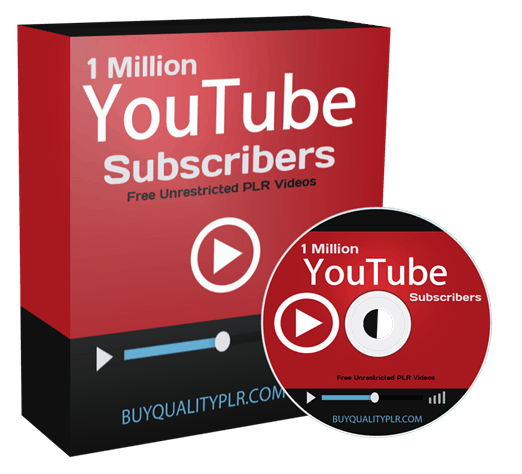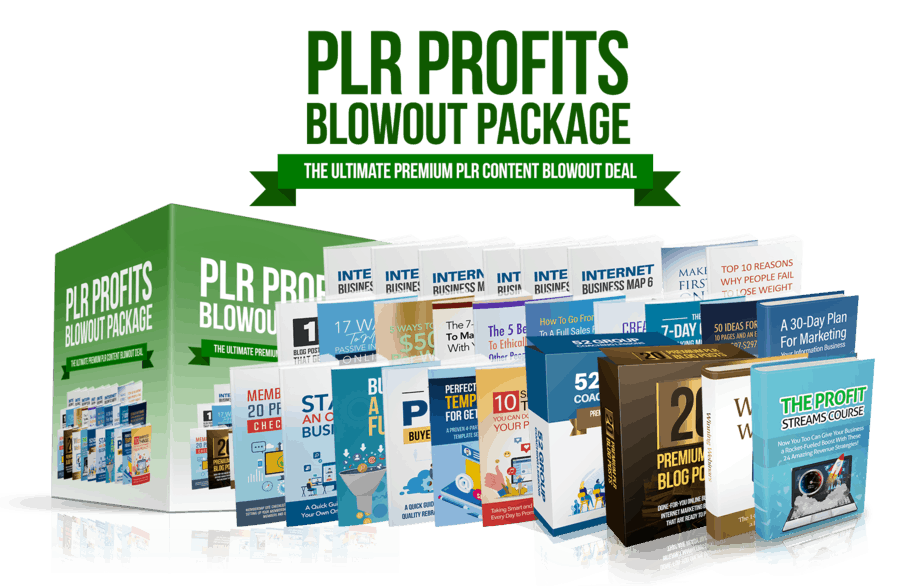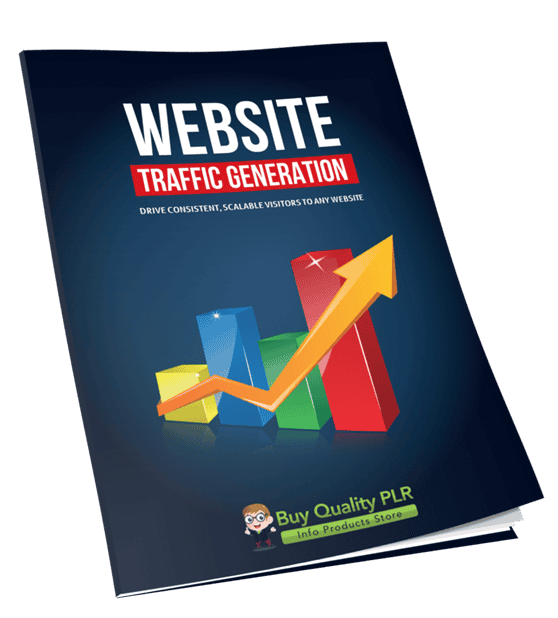
Website Traffic Generation PLR Course 21k Words
in PLR Checklists , PLR eBooks , PLR eCourses , PLR List Building Reports , Premium PLR , Premium PLR eBooks , Premium PLR Reports , Premium White Label Brandable PLR Coaching Courses , Private Label Rights Products , Traffic PLR , Traffic PLR eBooksChoose Your Desired Option(s)
has been added to your cart!
have been added to your cart!
#websitetraffic #digitalmarketing #onlinebusiness #trafficgeneration #plrcourse #marketingstrategy #leadgeneration #seotraining
Turn “Where do I find traffic?” into a repeatable, measurable system your audience can use—while you profit from a proven niche
Traffic is the oxygen of every online business. No traffic means no leads, no sales, and no growth. But most creators, coaches, bloggers, and store owners waste months bouncing between random tactics that never compound.
The Website Traffic Generation PLR Course gives you a complete, step-by-step training that teaches visitors how to set goals, master SEO, publish strategic content, leverage social and ads, build email audiences, and optimize everything with analytics. It’s practical, non-fluffy, and designed to be implemented in a weekend and refined for life.
And because it’s PLR, you can rebrand it, sell it as your own, add it to a membership, record it as a video course, or use it to fuel your content engine—without writing a single word from scratch.
Presenting…
Website Traffic Generation PLR Course 21k Words
What makes this PLR course different (and valuable to your customers)
- Holistic, channel-agnostic system. It doesn’t push one fad; it integrates SEO, content, social, paid, email, and analytics so results compound.
- Beginner-friendly, expert-capable. Clear, plain-English steps that still include pro-level checklists and processes.
- Action first. Every module ends with tangible tasks—publish this, configure that, measure these numbers—so learners move immediately.
- Evergreen. Core principles of traffic generation don’t expire; you can sell this for years with light updates.
- Snap-in assets. Use the included checklist, FAQs, and sales page to launch fast or bundle with your existing offers.
Inside the Course: What Your Buyers Will Learn
Module 1 — Understanding Website Traffic & Setting Up for Success
Lay a rock-solid foundation so every visitor has a clear path to conversion.
- Step 1: The Importance of Traffic
Demystifies traffic sources—organic, paid, referral, social, direct—and how each maps to business goals. - Step 2: Setting Realistic Traffic Goals
Define a website’s purpose (sales, leads, branding) and translate that into measurable targets (e.g., sessions, sign-ups, CPL, ROAS). - Step 3: Analyzing Your Current Traffic
How to read key reports in analytics tools, identify traffic distribution, and spot quick-win opportunities. - Step 4: Optimizing Your Website for Visitors
Speed, mobile UX, navigation, on-page structure, and essential SEO/plugin/tooling setup to convert traffic, not just attract it.
Outcome: Learners avoid “random acts of marketing” and begin with a clear, data-driven traffic plan.
Module 2 — Mastering SEO for Long-Term Traffic
Create a durable stream of organic visitors with compound growth.
- Step 1: Keyword Research – Finding What People Search For
Strategic seed/long-tail research, intent mapping, difficulty vs. opportunity, and prioritization. - Step 2: On-Page SEO – Optimizing Your Content
Titles, H1–H3 structure, internal links, image optimization, and natural keyword placement to rank without stuffing. - Step 3: Technical SEO – Making Your Site Search-Friendly
Crawl health, site speed, Core Web Vitals basics, indexation, XML sitemaps, and clean URL structure. - Step 4: Off-Page SEO – Building Authority
Link acquisition via guest posts, partnerships, directories, digital PR, and social sharing—all with quality standards.
Outcome: A search-ready site structure and content plan that compounds traffic month after month.
Module 3 — Content Marketing: The Fuel for Scalable Traffic
Publish once, distribute everywhere, and repurpose for maximum reach.
- Step 1: Creating High-Quality Content
Topic selection frameworks, problem-solution angles, and formatting for skim-readers and depth-seekers. - Step 2: Using a Content Calendar for Consistency
Editorial planning, cadence, themes, and workflow so publishing happens on time, every time. - Step 3: Repurposing Content for Maximum Reach
Turn a flagship blog into shorts, carousels, reels, infographics, threads, and email series. - Step 4: Leveraging User-Generated Content & Engagement
Comments, polls, Q&A, testimonials, and community prompts that multiply distribution.
Outcome: A content engine that reliably produces and spreads traffic-worthy assets across platforms.
Module 4 — Social Media & Paid Advertising for Fast Traffic
Accelerate growth with the right platforms and performance-minded ad strategy.
- Step 1: Choosing the Right Social Media Platforms
Audience-platform fit, content style per network, and a simple channel priority matrix. - Step 2: Organic Social Media Growth Strategies
Hooks, storytelling, lives, collaborations, and CTAs that drive profile visits and link clicks. - Step 3: Running Paid Ads for Quick Results
Fundamentals of campaign structure, targeting, creatives, and landing page alignment. - Step 4: Retargeting Visitors to Boost Conversions
Implement pixel/remarketing tags, segment site visitors, and craft retargeting offers that close the loop.
Outcome: A balanced organic + paid acquisition playbook that scales without guesswork.
Module 5 — Email Marketing & Advanced Growth Strategies
Own your audience and use data to improve what works.
- Step 1: Building an Email List for Traffic & Engagement
Lead magnets, opt-ins, placements, and messaging that converts passive visitors into subscribers. - Step 2: Creating Email Campaigns That Drive Traffic
Newsletter structure, subject line frameworks, timing, and content angles that earn clicks. - Step 3: Automating Your Email Sequences
Welcome, nurture, re-engagement, and promotional flows that keep traffic and sales steady. - Step 4: Tracking & Optimizing Traffic Strategies
KPI dashboards, A/B testing ideas, attribution basics, and a rinse-and-repeat optimization loop.
Outcome: A durable list-driven traffic source and the analytics skills to expand what works.
Exactly What You Get in the PLR Package
- The Full 19,185-Word Course
Five structured modules, 20 step-by-step lessons, written in a friendly, instructional tone. - Website Traffic Generation Checklist (479 words)
A printable action sheet covering setup, SEO, content, social/ads, and email—perfect for quick wins. - FAQs (1,093 words)
Answers to the most common questions buyers ask about traffic channels, timelines, budgets, and tools. - Done-For-You Sales Page (716 words)
Ready to upload—just add your brand, images, and buy button. - Commercial PLR License
Edit it, brand it, package it, and sell it—see permitted and restricted uses below.
Who This Course Is Perfect For
- Coaches/Consultants who want a curriculum to guide clients.
- Bloggers/Content Creators who need predictable growth, not sporadic spikes.
- Ecommerce Shop Owners seeking qualified visitors who convert.
- Local Businesses/Agencies looking to productize traffic services.
- Course Creators/Membership Owners who want high-value, evergreen modules to fill their library.
10 Proven Ways to Profit from This PLR
- Sell the course as-is under your brand for $47–$197.
- Record it as a video course and charge premium pricing ($197–$497).
- Bundle with SEO or Blogging PLR as a “Traffic Accelerator” package.
- Offer a group workshop (5-week cohort, one module per week).
- Create a membership and drip one module per week/month.
- Use Module 1 as a lead magnet and upsell the full course.
- Turn modules into webinars and close with coaching or services.
- Convert lessons into an email mini-course to nurture and pitch.
- License it to agencies as internal training for their clients.
- Flip a complete site preloaded with the course and a funnel.
Your Branding & Delivery Options
- Rebrand the text with your voice, screenshots, and examples.
- Add platform-specific tutorials for your niche (e.g., Pinterest for crafters, LinkedIn for B2B).
- Include your case studies to boost authority and conversion.
- Deliver as PDF, course portal, or LMS—or drip by email.
- Localize pricing and examples for your audience’s market.
What Your Buyers Will Walk Away With
- A traffic plan aligned with their business model and goals.
- A search-ready site and on-page/technical fundamentals handled.
- A content engine plus workflows and repurposing processes.
- A social + paid acquisition mix that drives immediate and sustainable visitors.
- An email list they own—with automations that send traffic back on demand.
- A measurement framework that makes improvement obvious and ongoing.
PLR License — What You Can & Can’t Do
You CAN:
- Edit, rebrand, and sell the content as your own.
- Convert to audio/video, use in courses, programs, or memberships.
- Bundle with other paid products.
- Excerpt portions as blog posts, emails, or lead magnets.
You CANNOT:
- Pass PLR/reprint/resell rights to your customers.
- Give away the complete course in its current form for free.
- Offer 100% affiliate commissions (max 75%).
- Add the full product to an existing order without an additional purchase.
Fast Start: Your 3-Step Launch Plan
- Brand it: Add your logo, colors, screenshots, and two quick case studies.
- Package it: Upload the course + checklist + FAQs to your cart or LMS.
- Promote it: Send a 3-email launch sequence, post a teaser thread, and run a $10/day retargeting campaign to past visitors.
(Need help? Ask and I’ll draft the 3-email sequence and a short social promo calendar to plug in.)
Why Buy Quality PLR for Traffic Training?
- Editorial standard: Clean, organized, and implementation-focused.
- Time leverage: Skip months of outlining, drafting, and editing.
- Higher margins: Sell repeatedly with near-zero delivery cost.
- Evergreen ROI: Traffic training is perennial; refresh examples to extend lifespan year after year.
Add-On Ideas to Increase AOV (Easy to Create)
- Traffic SOP Pack: Click-by-click docs for keyword research, on-page optimization, and publishing.
- Content Brief Templates: Ready-to-fill briefs for writers and VAs.
- Analytics Dashboard: Prebuilt spreadsheet with UTM & KPI summaries.
- Hook & Headline Vault: 200+ hooks for blog, reels, shorts, and ads.
Guarantee & Positioning (copy you can use on your product page)
“Implement one channel from Module 2–4 and watch your traffic KPIs improve—or reach out and we’ll point you to the exact lesson and checklist to fix your bottleneck. This course is built to be used, not just read.”
Ready to Launch Your Own Website Traffic Course?
With the Website Traffic Generation PLR Course, you get a complete, modern, and practical training you can sell immediately—plus the assets to launch quickly and the license to reuse it across your offers.
What you get today:
- 19,185-word step-by-step course (5 modules, 20 lessons)
- Printable implementation checklist
- In-depth FAQs for support and clarity
- Ready-to-use sales page copy
- Full commercial PLR license (no rights transfer)
Claim your copy, add your branding, and start selling a course your audience genuinely needs. Your traffic-driven business—and your customers’—starts here.
has been added to your cart!
have been added to your cart!
Here A Sample of the Website Traffic Generation PLR Course
Learn how to drive more traffic to your website using proven strategies, tools, and techniques.
Module 1: Understanding Website Traffic & Setting Up for Success
Step 1: The Importance of Website Traffic
Why Traffic Matters: More Visitors = More Potential Customers
If you have a website, traffic is the lifeblood of your online presence. No matter how well-designed or content-rich your website is, without visitors, it serves no purpose. Website traffic is the key to reaching your audience, generating leads, and converting potential customers into paying clients.
Think of your website as a store in a shopping mall. If no one walks into the store, no sales will happen. But if thousands of people visit daily, the chances of making a sale increase dramatically. More traffic means more visibility, engagement, and ultimately, more revenue.
However, not all traffic is created equal. The quality of visitors matters just as much as the quantity. Targeted traffic—meaning people who are actually interested in what you offer—is what drives business success. High-traffic numbers mean little if visitors leave your website within seconds without engaging.
The Benefits of High-Quality Website Traffic
- Increased Brand Awareness – The more people visit your site, the more they recognize and trust your brand.
- More Leads and Sales – A steady stream of the right audience increases conversions.
- Higher Search Engine Rankings – Google favors websites with more visitors and engagement.
- Stronger Online Authority – More traffic leads to backlinks and mentions, boosting credibility.
- More Opportunities for Monetization – High-traffic websites can earn revenue through ads, sponsorships, and affiliate marketing.
Understanding traffic sources helps in implementing the right strategy for consistent and sustainable growth. Now, let’s explore the different types of website traffic.
Different Types of Website Traffic
Not all website visitors arrive through the same channels. Website traffic is typically categorized into five main types: organic, paid, referral, social, and direct traffic. Each type plays a crucial role in your website’s success.
1. Organic Traffic (Free Search Engine Traffic)
Definition: Organic traffic refers to visitors who find your website through unpaid search engine results. When users search for something on Google, Bing, or Yahoo and click on your website in the search results, that counts as organic traffic.
Why It’s Important:
- Organic traffic is highly valuable because it comes from users actively searching for information, products, or services.
- It’s cost-effective because you don’t have to pay for clicks.
- Search engines reward websites with high-quality content by ranking them higher.
How to Get More Organic Traffic:
✔ Optimize your website for Search Engine Optimization (SEO).
✔ Create high-quality, keyword-rich content that answers users’ questions.
✔ Ensure your website is fast, mobile-friendly, and well-structured.
2. Paid Traffic (Traffic from Online Ads)
Definition: Paid traffic comes from visitors who arrive at your website through advertisements. These ads can appear on search engines, social media platforms, or other websites.
Common Paid Traffic Sources:
- Search Ads (Google Ads, Bing Ads) – Your website appears at the top of search results as a sponsored listing.
- Social Media Ads (Facebook Ads, Instagram Ads, LinkedIn Ads, Twitter Ads, TikTok Ads) – You pay to show targeted ads to users.
- Display Ads & Banner Ads – Graphical advertisements on websites, blogs, and mobile apps.
- YouTube Video Ads – Ads appearing before, during, or after videos.
Why It’s Important:
- Provides instant results—unlike organic traffic, which takes time to build.
- Allows precise audience targeting based on interests, demographics, and behaviors.
- Helps businesses launch and scale quickly.
How to Get the Most Out of Paid Traffic:
✔ Start with a clear budget and bidding strategy to control ad spend.
✔ Use compelling ad copy, visuals, and calls-to-action to attract clicks.
✔ Optimize landing pages to increase conversions from paid visitors.
3. Referral Traffic (Traffic from Other Websites)
Definition: Referral traffic refers to visitors who arrive at your website from another website, excluding search engines. This can happen when someone clicks on a link to your site from a blog post, article, forum, or online directory.
Why It’s Important:
- Increases brand exposure and credibility when authoritative sites link to you.
- Helps with SEO ranking as Google values backlinks from high-quality sites.
- Expands audience reach beyond search engines and social media.
How to Increase Referral Traffic:
✔ Get featured on guest blogs and industry-related websites.
✔ List your website on relevant directories and forums.
✔ Encourage satisfied customers to share your site on their platforms.
4. Social Traffic (Visitors from Social Media)
Definition: Social traffic comes from platforms like Facebook, Instagram, Twitter, LinkedIn, Pinterest, and TikTok when users click on links to your website.
Why It’s Important:
- Social media drives engagement, brand awareness, and community building.
- You can control and increase exposure by posting regularly and using ads.
- Viral content can explode traffic overnight.
How to Get More Social Traffic:
✔ Post high-quality, shareable content tailored for each platform.
✔ Use hashtags, trends, and influencers to expand reach.
✔ Encourage followers to engage, comment, and share your posts.
5. Direct Traffic (Users Who Type Your URL Directly)
Definition: Direct traffic consists of visitors who arrive at your website by typing your URL directly into their browser or using bookmarks.
Why It’s Important:
- Represents brand loyalty—users already know and trust your website.
- Indicates strong word-of-mouth marketing and repeat visitors.
- Not affected by search engine algorithms or ad spend.
How to Increase Direct Traffic:
✔ Build strong brand recognition through consistent marketing.
✔ Use memorable, easy-to-type domain names.
✔ Encourage visitors to bookmark your site and return.
Final Thoughts
Understanding the importance of website traffic and its various sources is the foundation of any successful online strategy. A balanced combination of organic, paid, referral, social, and direct traffic ensures consistent website growth and business success.
In the next step, we will explore how to set realistic traffic goals to measure progress and maximize results.
Step 2: Setting Realistic Traffic Goals
Now that you understand the importance of website traffic and its various types, the next step is to set realistic, measurable, and achievable goals for your website traffic. Without clear goals, it’s impossible to track progress, measure success, or adjust strategies effectively.
Many website owners make the mistake of chasing traffic without a clear purpose. Simply increasing visitor numbers doesn’t always lead to success. The key is to define why you need traffic and what you want to achieve with it.
In this step, we will go through a structured process to define your website’s purpose and set measurable traffic goals that align with your business or personal objectives.
1. Define Your Website’s Purpose
Before setting traffic goals, you need to clearly define the purpose of your website. Every website serves a specific function, and understanding yours will help shape your traffic strategy.
Ask yourself:
✔ What is the primary goal of my website?
✔ What action do I want visitors to take when they land on my site?
✔ Who is my target audience, and what are they looking for?
Common Website Purposes and Their Traffic Goals
| Website Type | Primary Purpose | Traffic Focus |
| E-commerce Store | Sell products online | High-converting traffic from search engines, social media, and paid ads |
| Lead Generation Website | Collect emails, sign-ups, or inquiries | Targeted traffic through SEO, content marketing, and referral sources |
| Branding Website | Establish authority and build trust | Organic traffic and social engagement |
| Affiliate Marketing Site | Earn commissions from product recommendations | SEO-driven traffic from high-ranking content |
| Blog or News Website | Drive ad revenue and engagement | High-volume organic and social traffic |
| Local Business Site | Attract customers to a physical location | Local SEO and direct traffic from word-of-mouth |
| Educational or Membership Site | Sell courses or subscriptions | Social and referral traffic, plus paid campaigns |
Your website’s purpose determines the type of traffic you should focus on. For example:
- If you run an e-commerce store, traffic from search engines (organic traffic) and paid ads (Google Ads, Facebook Ads) might be your best sources.
- If your website is content-driven (blogs, news sites), you’ll likely rely on organic search traffic and social shares.
- If you offer online courses or memberships, referral traffic from influencers, email marketing, and direct traffic from loyal users can be your priority.
2. Set Measurable Traffic Goals
Once you define your website’s purpose, you need to establish specific and measurable traffic goals. Goals must be realistic and achievable while still being ambitious enough to drive growth.
Key Factors to Consider When Setting Goals
✔ Your Current Traffic Levels – Analyze how much traffic you are currently getting to set realistic improvement targets.
✔ Industry Benchmarks – Research how much traffic similar websites receive in your niche.
✔ Available Marketing Resources – Consider your budget, team size, and available marketing strategies.
✔ Time Frame – Determine whether your goal is short-term (3-6 months) or long-term (1-2 years).
Examples of SMART Traffic Goals
Your traffic goals should follow the SMART framework:
✔ Specific – Clearly define what you want to achieve.
✔ Measurable – Set a number that you can track.
✔ Achievable – Be realistic based on current trends.
✔ Relevant – Align with your website’s purpose.
✔ Time-bound – Set a deadline for achievement.
Example 1: E-commerce Store
❌ Bad Goal: “I want more people to visit my store.”
✅ SMART Goal: “Increase monthly website traffic to 10,000 visitors within six months through SEO and social media marketing.”
Example 2: Blog Website
❌ Bad Goal: “I want my blog to go viral.”
✅ SMART Goal: “Grow organic traffic by 50% in the next four months by publishing one high-quality SEO-optimized article per week.”
Example 3: Lead Generation Website
❌ Bad Goal: “I want more leads.”
✅ SMART Goal: “Increase website traffic from 5,000 to 8,000 visitors per month and improve conversion rates to generate 500 new leads in the next three months.”
3. Use Website Analytics to Track and Adjust Goals
Once you set measurable goals, the next step is to track your progress and make adjustments as needed. If you don’t track your traffic sources and performance, you won’t know whether your strategies are working.
Essential Traffic Tracking Tools
- Google Analytics (Free) – Tracks overall traffic, sources, and user behavior.
- Google Search Console (Free) – Monitors search engine performance, keyword rankings, and organic traffic trends.
- SEMrush / Ahrefs (Paid) – Advanced tools for analyzing competitors and keyword opportunities.
- Facebook Business Suite / LinkedIn Analytics – Helps track social media-driven traffic.
How to Analyze and Adjust Traffic Goals
✔ Check Your Metrics Weekly: Are visitors increasing as expected?
✔ Identify High-Performing Channels: Where is your traffic coming from?
✔ Adjust Strategies as Needed: If social traffic is lower than expected, increase engagement efforts.
✔ Refine Your Goals Every 3-6 Months: If you achieve a goal early, set a new one to keep growing.
4. Break Goals into Smaller Actionable Steps
Setting a goal like “reach 50,000 monthly visitors” may feel overwhelming. To stay motivated and measure progress, break large goals into smaller steps.
Example: Growing an E-commerce Website’s Traffic
🎯 Ultimate Goal: Increase traffic from 5,000 to 20,000 visitors per month in 6 months.
| Step | Action |
| Month 1: | Improve on-page SEO, research high-traffic keywords, and optimize product pages. |
| Month 2: | Publish weekly blog posts targeting relevant keywords. |
| Month 3: | Start paid advertising campaigns on Google and Facebook. |
| Month 4: | Build backlinks through guest posts and influencer collaborations. |
| Month 5: | Increase social media engagement and run promotions to attract more traffic. |
| Month 6: | Analyze results, adjust the strategy, and set new goals. |
By breaking big goals into monthly and weekly tasks, it becomes easier to stay on track and measure progress.
Final Thoughts
Setting realistic traffic goals is the foundation of a successful website growth strategy. Without a clear goal, it’s easy to waste time and effort on tactics that don’t produce results.
By following these steps:
✔ Defining your website’s purpose
✔ Setting measurable and achievable traffic goals
✔ Tracking progress with analytics tools
✔ Breaking goals into smaller actionable steps
…you’ll have a solid framework to consistently increase website traffic and achieve long-term success.
In the next step, we will dive into traffic generation strategies and the best ways to drive more visitors to your website.
Step 3: Analyzing Your Current Traffic
Now that you’ve set realistic traffic goals, it’s time to evaluate where your website stands today. Before you implement new strategies to increase website traffic, you must first understand your current traffic levels, visitor behavior, and primary traffic sources.
Without proper analysis, you may end up investing time and money into channels that aren’t bringing in the right visitors. By using data-driven insights, you can refine your marketing strategy and focus on what works best for your website.
In this step, you’ll learn how to use Google Analytics to track your visitors and how to identify your current traffic sources for better decision-making.
1. Why Website Traffic Analysis is Important
Traffic analysis is essential for:
✔ Understanding how many visitors you’re currently getting.
✔ Knowing where your visitors come from (Google, social media, referrals, etc.).
✔ Identifying which pages perform best and where visitors spend the most time.
✔ Spotting traffic drops or sudden spikes to investigate potential issues or successful strategies.
✔ Making data-driven marketing decisions to improve your website’s traffic and conversion rates.
By regularly analyzing your website traffic, you’ll be able to optimize your strategies and allocate resources to the most effective traffic sources.
2. Setting Up Google Analytics to Track Visitors
The best way to track website visitors is by using Google Analytics. This free tool provides comprehensive insights into your audience, traffic sources, and user behavior.
Step-by-Step Guide to Setting Up Google Analytics
Step 1: Sign Up for Google Analytics
- Go to Google Analytics and sign in with your Google account.
- Click “Start measuring” and enter your website details (name, URL, industry, time zone).
- Accept Google’s terms and conditions.
Step 2: Get Your Google Analytics Tracking Code
- After setting up your account, Google Analytics will generate a tracking ID (GA4 property).
- Copy the tracking code (Global Site Tag) provided.
Step 3: Install the Tracking Code on Your Website
For WordPress Websites:
- Install the Google Site Kit plugin or use the Insert Headers and Footers plugin to paste the tracking code.
- Alternatively, you can add the tracking ID directly in your theme settings under “Google Analytics” or “Custom Scripts.”
For Shopify Websites:
- Go to Online Store > Preferences, paste the tracking ID in the Google Analytics section, and save.
For Other Platforms:
- Add the tracking code to your website’s
<head>section of every page manually or through a tag manager.
Step 4: Verify Tracking and Start Collecting Data
- Wait 24-48 hours for data to populate in Google Analytics.
- Visit the Reports > Realtime section to check if your visits are being tracked in real time.
Now that Google Analytics is tracking your visitors, you can analyze your traffic sources.
3. Identifying Where Your Traffic is Coming From
Once Google Analytics is set up, you can explore your traffic data to determine where your visitors are coming from.
How to Check Traffic Sources in Google Analytics
- Open Google Analytics and go to Reports.
- Click on Acquisition > Traffic Acquisition.
- You will see a breakdown of different traffic sources.
Understanding Different Traffic Sources
| Traffic Source | Definition | Example |
| Organic Traffic | Visitors who find your website through search engines like Google or Bing. | Someone searches for “best running shoes” and clicks on your website in Google results. |
| Direct Traffic | Visitors who type your website URL directly into their browser. | A user types www.yourwebsite.com into their address bar. |
| Referral Traffic | Visitors who click on a link from another website to reach yours. | A blog links to your site, and people click on it. |
| Social Traffic | Visitors coming from social media platforms like Facebook, Instagram, Twitter, or LinkedIn. | Someone clicks on your post from Facebook and lands on your website. |
| Paid Traffic | Visitors who arrive through paid advertising campaigns (Google Ads, Facebook Ads, etc.). | You run a Google Ad, and users click on it. |
| Email Traffic | Visitors coming from links inside an email campaign. | A subscriber clicks a link in your newsletter and visits your site. |
How to Interpret Your Traffic Data
✔ If organic traffic is low, you need to improve SEO and content marketing.
✔ If direct traffic is high, it means you have strong brand awareness, but you might need to track offline campaigns better.
✔ If referral traffic is strong, focus on link-building strategies and partnerships.
✔ If social traffic is minimal, it may indicate that your social media efforts need improvement.
✔ If paid traffic is the main source, consider whether you’re getting a good return on investment (ROI).
4. Analyzing Visitor Behavior to Improve Your Traffic Strategy
Beyond knowing where traffic comes from, it’s crucial to analyze how visitors behave on your website.
Key Website Metrics to Monitor
| Metric | What It Tells You | Ideal Benchmark |
| Users & Sessions | How many people visit your website and how often they return. | Aim for a consistent upward trend. |
| Bounce Rate | Percentage of visitors who leave after viewing only one page. | Lower than 50% is ideal. |
| Session Duration | The average time a visitor spends on your website. | 2+ minutes indicates good engagement. |
| Pages Per Session | The number of pages a visitor views before leaving. | Higher means better engagement (2-5 pages is good). |
| Conversion Rate | Percentage of visitors who complete a goal (purchase, sign-up, etc.). | Varies by industry, but 2-5% is average. |
How to Use Visitor Data to Improve Your Website Traffic
✔ If your bounce rate is high, improve your website speed, content quality, and user experience.
✔ If session duration is low, add more engaging content like videos and internal links.
✔ If your conversion rate is low, optimize your landing pages and calls-to-action (CTAs).
Final Thoughts
Analyzing your current traffic is crucial for making informed decisions about your website’s growth. By setting up Google Analytics, tracking your visitors, and understanding where they come from, you’ll gain powerful insights that will help you refine your marketing strategy.
Key Takeaways
✔ Install and configure Google Analytics to track website visitors.
✔ Identify your main traffic sources (organic, direct, social, referral, paid).
✔ Monitor key metrics like bounce rate, session duration, and conversion rates.
✔ Use data insights to adjust your traffic strategy and focus on high-performing channels.
In the next step, we will explore effective strategies to drive more traffic to your website and grow your audience!
Step 4: Optimizing Your Website for Visitors
Once you’ve analyzed your traffic and understood where your visitors are coming from, the next critical step is optimizing your website. No matter how much traffic you drive to your site, if visitors have a poor experience, they will leave without taking action.
Website optimization ensures that when visitors arrive, they stay longer, navigate easily, and ultimately convert—whether that means making a purchase, signing up for a newsletter, or engaging with your content.
In this step, you’ll learn how to:
✔ Improve website loading speed for better user experience.
✔ Ensure mobile-friendliness to accommodate all users.
✔ Optimize user experience (UX) for easy navigation.
✔ Install essential plugins and SEO tools to enhance performance.
1. Ensuring Fast Loading Speed
Why is website speed important?
- Faster websites rank higher on Google—site speed is a key ranking factor.
- Slow websites drive visitors away—if your page takes more than 3 seconds to load, most users will leave.
- Speed impacts conversion rates—Amazon found that for every 100ms delay in load time, they lost 1% in sales.
How to Check Your Website Speed
Use the following tools to analyze your site speed:
✔ Google PageSpeed Insights (https://pagespeed.web.dev/) – Get detailed performance reports.
✔ GTmetrix (https://gtmetrix.com/) – Analyze loading time, performance score, and areas for improvement.
✔ Pingdom (https://tools.pingdom.com/) – Test website speed from different locations worldwide.
Ways to Improve Website Speed
- Use a Fast Hosting Provider
- Choose a reliable hosting service like SiteGround, Bluehost, Cloudways, or WP Engine for better speed and uptime.
- Avoid shared hosting if your site has high traffic—consider VPS or cloud hosting.
- Enable Caching
- Install a caching plugin like WP Rocket, W3 Total Cache, or LiteSpeed Cache to store static versions of your website for faster loading.
- Optimize Images
- Large images slow down websites. Compress images using TinyPNG (https://tinypng.com/) or Smush (a WordPress plugin).
- Use WebP format instead of JPEG/PNG for faster loading.
- Minimize HTTP Requests & Enable Gzip Compression
- Reduce the number of files loaded (CSS, JavaScript, images) to improve speed.
- Enable Gzip compression via your hosting panel or a plugin like WP Rocket.
- Use a Content Delivery Network (CDN)
- A CDN (such as Cloudflare or BunnyCDN) distributes your site’s content across multiple servers worldwide, reducing load time for visitors from different locations.
2. Ensuring Mobile-Friendliness
With over 60% of internet traffic coming from mobile devices, your website must be fully responsive.
How to Check if Your Website is Mobile-Friendly
✔ Use Google’s Mobile-Friendly Test (https://search.google.com/test/mobile-friendly) to analyze mobile performance.
✔ Manually check your site on different devices (smartphones, tablets, and desktops).
How to Improve Mobile Responsiveness
- Use a Mobile-Friendly Theme
- If you’re using WordPress, choose a responsive theme like Astra, GeneratePress, or Divi.
- Test how your website adjusts on different screen sizes.
- Enable Accelerated Mobile Pages (AMP)
- AMP speeds up mobile pages by stripping down unnecessary elements.
- Install the AMP for WP plugin on WordPress to enable AMP.
- Optimize Fonts and Buttons
- Use readable fonts (minimum 16px for mobile text).
- Ensure buttons are large enough and easy to tap on mobile screens.
- Use Click-to-Call and Click-to-Email Links
- Make it easy for users to contact you by adding clickable phone numbers and email links on mobile.
3. Improving User Experience (UX)
What is UX and Why Does It Matter?
UX refers to how easy and enjoyable it is for visitors to navigate and use your website. A poor UX leads to higher bounce rates and lost potential customers.
Key UX Improvements
- Simplify Navigation
- Use a clean, intuitive menu with easy-to-understand labels.
- Limit the number of menu items to 5-7 for clarity.
- Use a Clear Call-to-Action (CTA)
- Every page should have a clear CTA (e.g., “Sign Up,” “Buy Now,” “Learn More”).
- Place CTAs above the fold (visible without scrolling) for higher engagement.
- Improve Readability
- Use short paragraphs (2-3 sentences max per paragraph).
- Add bullet points and headings to break up text.
- Use contrasting colors to highlight key sections.
- Reduce Pop-Ups and Distractions
- Avoid excessive pop-ups that frustrate users.
- Use exit-intent pop-ups instead of immediate pop-ups.
4. Installing Essential Plugins and SEO Tools
To further enhance your website’s performance and visibility, install key plugins and tools.
Essential SEO Plugins and Tools
✔ Yoast SEO (WordPress) – Helps optimize meta titles, descriptions, and keywords for search engines.
✔ Rank Math – Alternative to Yoast, with advanced SEO insights.
✔ Google Search Console – Helps track indexing, search rankings, and fix website errors.
✔ Google Analytics – Tracks website visitors and their behavior.
✔ Ahrefs Webmaster Tools – Checks backlinks and site health.
Performance & Security Plugins
✔ WP Rocket – Improves website speed with caching and compression.
✔ Smush – Optimizes and compresses images for faster loading.
✔ Sucuri Security – Protects your site from malware and cyber threats.
✔ Cloudflare – Provides CDN, security, and performance enhancements.
User Engagement Plugins
✔ WPForms – Create contact forms and surveys.
✔ MonsterInsights – Connects Google Analytics for easy visitor tracking.
✔ LiveChat – Enables real-time chat support on your site.
Final Thoughts
Optimizing your website is essential to ensure that visitors stay, engage, and convert. A slow, unresponsive, or hard-to-navigate website can lead to lost traffic and lower rankings.
Key Takeaways
✔ Improve website speed using caching, CDNs, and image compression.
✔ Make your site mobile-friendly by using a responsive theme and optimizing for mobile users.
✔ Enhance user experience (UX) with clear navigation, CTAs, and readability.
✔ Install essential plugins and tools to improve performance, SEO, and security.
By implementing these strategies, your website will not only attract visitors but also keep them engaged and coming back for more.
In the next step, we will focus on proven methods to drive more traffic to your website through strategic marketing efforts!
We’re also giving these extra bonuses
Website Traffic Generation – Checklist
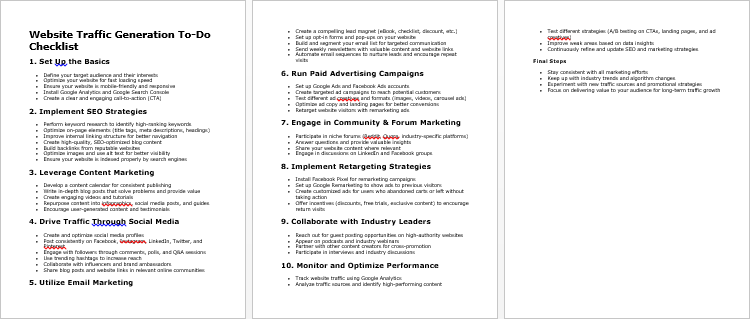
Website Traffic Generation – FAQs

Website Traffic Generation – Salespage Content

Package Details:
Word Count: 19 185 Words
Number of Pages: 83
Website Traffic Generation – Bonus Content
Checklist
Word Count: 479 words
FAQs
Word Count: 1093 words
Salespage Content
Word Count: 716 words
Total Word Count: 21 473 Words
Your PLR License Terms
PERMISSIONS: What Can You Do With These Materials?
Sell the content basically as it is (with some minor tweaks to make it “yours”).
If you are going to claim copyright to anything created with this content, then you must substantially change at 75% of the content to distinguish yourself from other licensees.
Break up the content into small portions to sell as individual reports for $10-$20 each.
Bundle the content with other existing content to create larger products for $47-$97 each.
Setup your own membership site with the content and generate monthly residual payments!
Take the content and convert it into a multiple-week “eclass” that you charge $297-$497 to access!
Use the content to create a “physical” product that you sell for premium prices!
Convert it to audios, videos, membership site content and more.
Excerpt and / or edit portions of the content to give away for free as blog posts, reports, etc. to use as lead magnets, incentives and more!
Create your own original product from it, set it up at a site and “flip” the site for megabucks!
RESTRICTIONS: What Can’t You Do With These Materials?
To protect the value of these products, you may not pass on the rights to your customers. This means that your customers may not have PLR rights or reprint / resell rights passed on to them.
You may not pass on any kind of licensing (PLR, reprint / resell, etc.) to ANY offer created from ANY PORTION OF this content that would allow additional people to sell or give away any portion of the content contained in this package.
You may not offer 100% commission to affiliates selling your version / copy of this product. The maximum affiliate commission you may pay out for offers created that include parts of this content is 75%.
You are not permitted to give the complete materials away in their current state for free – they must be sold. They must be excerpted and / or edited to be given away, unless otherwise noted. Example: You ARE permitted to excerpt portions of content for blog posts, lead magnets, etc.
You may not add this content to any part of an existing customer order that would not require them to make an additional purchase. (IE You cannot add it to a package, membership site, etc. that customers have ALREADY paid for.)
Share Now!

